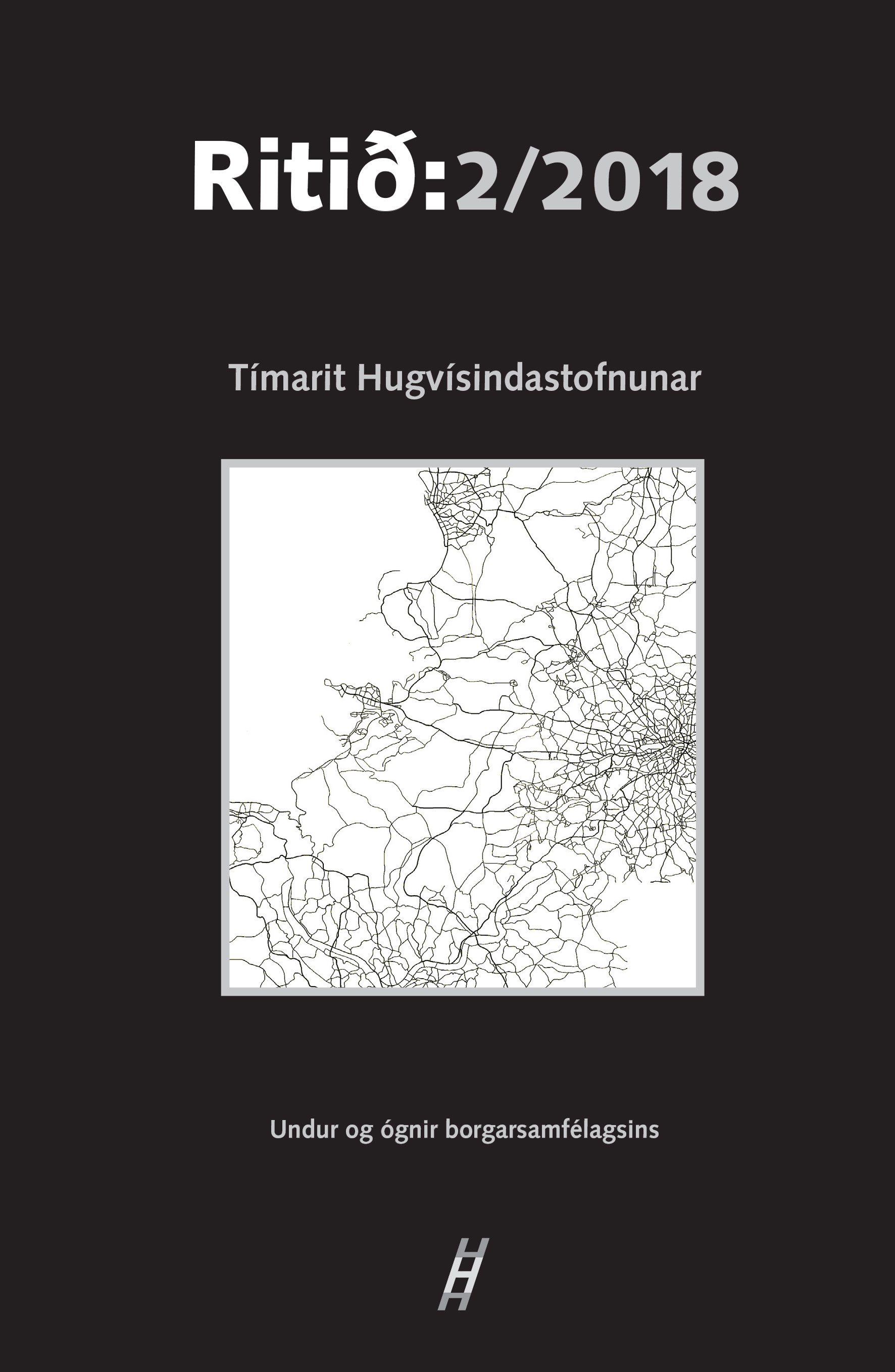Líkami drengsins sem aldrei var til
Um samband samfélags og líkama í óreiðuástandi spænsku veikinnar í Mánasteini eftir Sjón
Abstract
Skáldsagan Mánasteinn: Drengurinn sem aldrei var til (2013) eftir Sjón segir frá þremur viðburðaríkum mánuðum í lífi drengsins Mána Steins haustið 1918. Á þessum stutta tíma gýs Katla, spænska veikin gengur yfir og Ísland öðlast fullveldi frá Dönum. Í greininni er líkamsorðræða Mánasteins skoðuð með hliðsjón af kenningum Judith Butler, Mary Douglas og Michel Foucault er lúta að líkamanum sem menningarlegri smíð. Samkvæmt Douglas eru hættusvæði líkamans beintengd hættusvæðum samfélagsins og allt það sem ógnar mörkum samfélagsheildarinnar er talið félagsleg mengun (e. social pollution). Foucault fetar svipaðar slóðir í alsæiskenningu sinni, en samkvæmt henni viðheldur borgarsamfélagið formgerð sinni með eftirliti og ögun líkama þegna sinna. Máni Steinn er samkynhneigður og er líkami hans því á skjön við hugmyndir þess tíma um hvað telst heilsteyptur og heilbrigður líkami. Frávik frá hinum „heilbrigða“, gagnkynhneigða líkama skapar óeiningu innan heildarinnar og því leitast samfélagið við að útskúfa Mána. En koma spænsku veikinnar til Reykjavíkur umturnar stigveldi samfélagsins og afbyggir viðteknar hugmyndir um líkamann. Aðgreining heilbrigðra og smitaðra þurrkast út og líkaminn verður vettvangur þar sem ósættanlegar andstæður renna saman. Í óreiðuástandi spænsku veikinnar verða landamæri líkamans óskýr og mörk samfélagsins verða að sama skapi fljótandi.
https://doi.org/10.33112/ritid.18.2.5
Abstract
Moonstone: The Boy Who Never Was (Mánasteinn: Drengurinn sem aldrei var til, 2013) by Sjón tells of three eventful months in the life of Máni Steinn in the fall of 1918. In this short period the volcano Katla erupts, the Spanish flu rages and Iceland regains its sovereignty from Denmark. Building on Judith Butler’s, Mary Douglas’s and Michel Foucault’s theories regarding the body as a cultural construct, this article focuses on body discourse as presented in Moonstone. According to Douglas there is a direct link between boundaries of the body and boundaries of society. Everything that endangers the stability of society’s boundaries is considered social pollution. Foucault’s theory on panopticism likewise identifies surveillance and discipline of citizens’ bodies as means of maintaining society’s social structure. Because Máni Steinn is queer, his body is considered abnormal according to the period’s definitions on what constitutes a healthy and stable body. Aberrations from the „healthy“, heterosexual body creates divergence within society's fabric. To regain the appearance of a „pure“ society Máni needs to be hidden or banished from it. Yet the arrival of the Spanish flu to Reykjavík deconstructs conventional definition of the body and unravels the social hierarchy. The distinction between the healthy and the infected is obliterated, as the body becomes a site where irreconcilable opposites merge. During the turmoil of the Spanish flu boundaries of the body become as unstable as society's boundaries become fluent.

